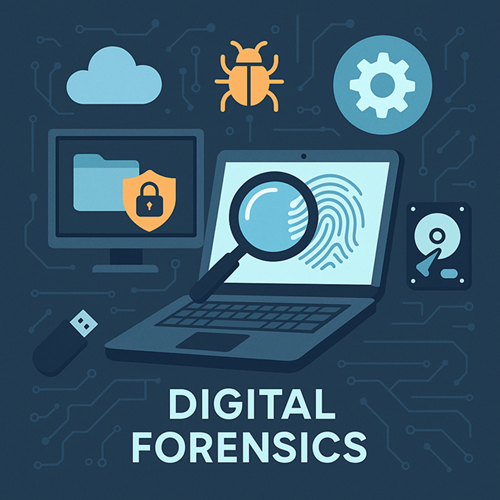
In today's digital age, forensic accounting has evolved beyond traditional paper trails to encompass complex digital evidence. Understanding digital forensics is crucial for modern accounting professionals dealing with financial crimes and fraud investigations.
The Evolution of Forensic Accounting
Forensic accounting has undergone a significant transformation in recent years. What once relied primarily on physical documents and manual analysis now requires sophisticated digital investigation techniques. Modern forensic accountants must be equipped with both traditional accounting skills and cutting-edge technology expertise.
The rise of digital transactions, cloud computing, and cryptocurrency has created new challenges and opportunities in forensic accounting. Financial crimes are increasingly sophisticated, requiring equally advanced detection and investigation methods.
Key Components of Digital Forensics
Digital forensics in accounting encompasses several critical areas:
1. Data Recovery and Analysis
Modern forensic accountants must be skilled in recovering deleted files, analyzing database structures, and extracting meaningful information from corrupted or damaged digital media. This includes understanding various file systems, data storage methods, and recovery techniques.
2. Electronic Transaction Analysis
With the majority of financial transactions now conducted electronically, forensic accountants must understand how to trace digital payment systems, analyze electronic banking records, and investigate online financial activities.
3. Cryptocurrency Investigations
The emergence of cryptocurrencies has created new avenues for financial crimes. Forensic accountants must understand blockchain technology, cryptocurrency exchanges, and digital wallet analysis to effectively investigate crypto-related fraud.
4. Email and Communication Analysis
Digital communications often contain crucial evidence in fraud cases. Forensic accountants must be able to analyze email metadata, recover deleted communications, and understand various messaging platforms and their data structures.
Tools and Technologies
The digital forensics toolkit for modern forensic accountants includes:
- Data Analysis Software: Advanced tools for processing large datasets and identifying patterns
- Forensic Imaging Tools: Software for creating exact copies of digital media for analysis
- Database Analysis Tools: Specialized software for examining complex database structures
- Network Analysis Tools: Tools for investigating network traffic and digital communications
- Mobile Device Forensics: Specialized tools for extracting data from smartphones and tablets
Legal Considerations
Digital forensics in accounting must always consider legal requirements and admissibility standards. Key considerations include:
Chain of Custody
Maintaining proper chain of custody for digital evidence is crucial for legal proceedings. Every step of the investigation must be documented and verifiable.
Data Privacy and Protection
Forensic accountants must navigate complex data privacy laws while conducting investigations. Understanding regulations like GDPR, NDPR, and other local privacy laws is essential.
Evidence Admissibility
Digital evidence must meet specific criteria to be admissible in court. Forensic accountants must understand these requirements and ensure their investigation methods comply with legal standards.
Best Practices for Digital Forensics
To ensure effective digital forensics investigations, forensic accountants should follow these best practices:
- Immediate Response: Act quickly to preserve digital evidence before it can be altered or destroyed
- Comprehensive Documentation: Maintain detailed records of all investigation steps and findings
- Use Certified Tools: Employ industry-standard, legally accepted forensic tools and software
- Continuous Education: Stay updated with the latest digital forensics techniques and technologies
- Collaboration: Work closely with IT professionals and legal experts throughout the investigation
Future Trends in Digital Forensics
The field of digital forensics continues to evolve rapidly. Emerging trends include:
Artificial Intelligence and Machine Learning
AI and ML technologies are increasingly being used to analyze large datasets, identify patterns, and automate certain aspects of forensic investigations.
Cloud Forensics
As more organizations move to cloud-based systems, forensic accountants must develop expertise in cloud forensics and understand the unique challenges of investigating cloud-based financial crimes.
Internet of Things (IoT) Forensics
The proliferation of IoT devices creates new sources of potential evidence and new challenges for forensic investigators.
Conclusion
Digital forensics has become an integral part of modern forensic accounting. As technology continues to advance, forensic accountants must continuously update their skills and knowledge to effectively investigate financial crimes in the digital age.
At YUSALH Consulting Firm, we stay at the forefront of digital forensics technology and techniques, ensuring our clients receive the most comprehensive and effective forensic accounting services available.